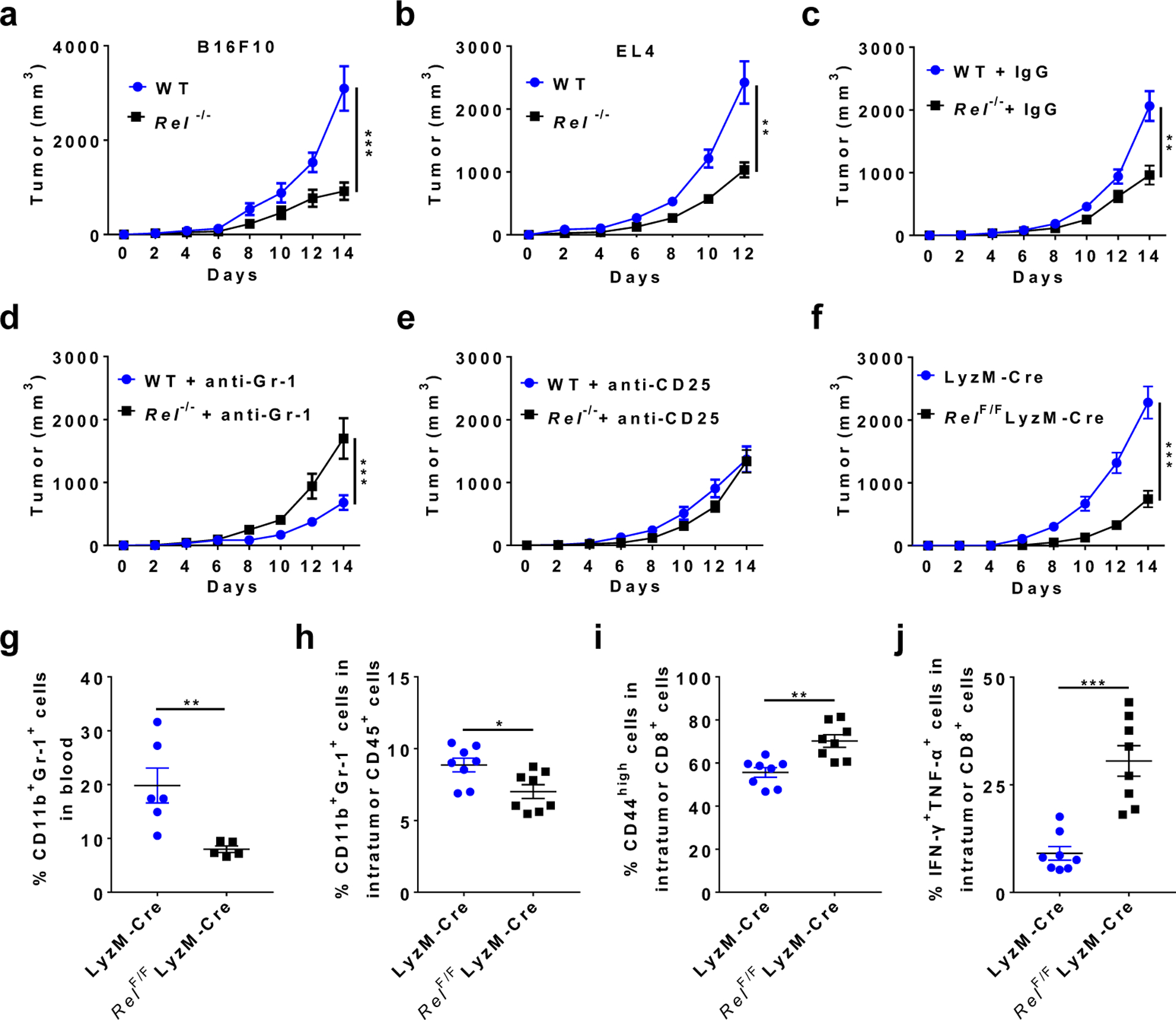Fig. 1. Global and myeloid Rel gene deletion block tumor growth, reduce MDSCs, and enhance effector CD8+ T cells in mice.

a, b, Tumor growth in wild-type (WT) and Rel−/− mice that were injected s.c. with B16F10 (a, n=20 mice/group), or EL4 (b, n=10 mice/group) tumor cells (**, P=0.0086; ***, P<0.0001).
c, Tumor growth in WT (n=16 mice/group) and Rel−/− (n=15 mice/group) mice injected with B16F10 cells and IgG isotype control (**, P=0.005).
d, Tumor growth in WT (n=11 mice/group) and Rel−/− (n=10 mice/group) mice injected with B16F10 cells and anti-Gr-1 (***, P=0.0003).
e, Tumor growth in WT (n=10 mice/group) and Rel−/− (n=10 mice/group) mice injected with B16F10 cells and anti-CD25.
f, Tumor growth in LyzM-Cre (n=18 mice/group) and LyzM-Cre RelF/F mice (n=13 mice/group) that were injected with B16F10 cells (***, P<0.0001).
g-j,Percentages of the indicated leukocyte subsets in blood (g) and tumor (h-j) of LyzM-Cre and LyzM-Cre RelF/F mice that had similar size of tumors 14 days post tumor cell inoculation, as determined by flow cytometry. n=6 for the LyzM-Cre group and n=5 for the LyzM-Cre RelF/F group (g); n=8 for both groups (h-j); *, P=0.0156; ** P<0.01; ***, P<0.0001. Statistical significance was determined by Mann-Whitney U-test (a-f) or two-tailed unpaired t-test (g-j). Data are presented as means ± s.e.m., and pooled from at least three (a-f) or two independent experiments (g-j).
